The Amanita Muscaria, known as fly agaric, is a mushroom with a storied cultural history and known for its psychoactive properties. It contains compounds like ibotenic acid and muscimol, which have shown potential therapeutic effects, including antidepressant-like and neuroprotective benefits. However, due to its potency and the need for precise dosing, its use is under scientific scrutiny to ensure safety and efficacy in therapeutic applications. Proper identification, correct preparation, and adherence to legal regulations are essential when consuming Amanita Muscaria. It's important to consult with healthcare professionals, especially for those with pre-existing health conditions, and to approach its consumption with caution. As research continues, there is potential for the mushroom to be integrated into medical treatments, but until more is known, it should be used responsibly and under expert supervision.
Exploring the complexities of Amanita Muscaria, commonly known as the Fly Agaric, this comprehensive article peels back layers of history and science to illuminate its pharmacological properties and safe cultivation for dosage. From understanding the factors that influence its effects to mastering various preparation methods, we delve into the legal considerations and personal anecdotes surrounding Amanita Muscaria consumption. With a focus on the edible aspects, this article also explores potential therapeutic applications and the future of research in this unique field. Join us as we navigate the nuanced world of Amanita Muscaria dosage, ensuring a balanced and informative read for both enthusiasts and newcomers alike.
Unveiling the Mysteries of Amanita Muscaria: A Historical Perspective
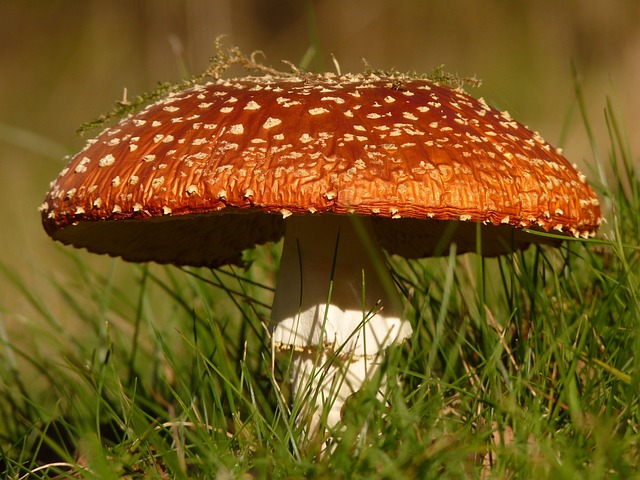
The Amanita Muscaria, commonly known as the fly agaric, has long captivated human curiosity with its distinctive red-and-white cap, a hallmark in folklore and art across cultures. Historically revered and feared in equal measure, this mushroom’s place in human culture is multifaceted. From ancient Siberian shamanistic rituals to medieval European mythology, where it was believed to be the toadstool that granted psilocybin-induced visions to witches, the Amanita Muscaria edible has intrigued and mystified societies for millennia. Its psychoactive properties have been both celebrated and shunned, with a history of use in spiritual practices and as an entheogen, contributing to a profound understanding of self and the cosmos. The careful selection and preparation of this mushroom for consumption, often through detailed cultural practices, underscore the historical significance of Amanita Muscaria within human societies, highlighting its role as both a natural phenomenon and a cornerstone in various cultural narratives. As such, it holds a unique position in the history of human use of psychoactive substances, reflecting a blend of spirituality, medicine, and folklore that continues to be explored today.
The Science Behind Amanita Muscaria: Pharmacological Properties and Mechanisms of Action
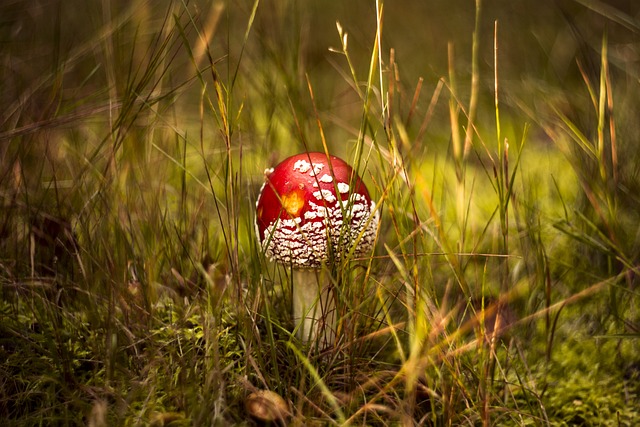
The Amanita Muscaria, commonly known as the fly agaric, is a species of mushroom with a rich history of use in various cultural contexts. Of particular interest is its edible aspect, which has been both celebrated and controversial due to its psychoactive properties. Scientifically, the Amanita Muscaria contains several pharmacologically active compounds, primarily ibotenic acid and muscimol, which are responsible for its psychoactive effects when ingested. These substances can interact with the central nervous system, leading to a range of perceptual changes and altered states of consciousness. The mechanism of action involves the binding of these compounds to neuroreceptors, particularly those for the neurotransmitter glutamate in the brain, which modulates excitatory neurotransmission and can lead to sensory distortions and hallucinations. Research into the pharmacology of Amanita Muscaria has revealed that its effects are dose-dependent, with lower doses potentially inducing mild euphoria and visual disturbances, while higher doses can cause more profound changes in perception and cognition. The therapeutic potential of these compounds is an area of ongoing research, with studies exploring their effects on depression, anxiety, and neurodegenerative diseases. Understanding the precise dosage and its implications is crucial for both therapeutic use and ensuring safe experiences among those who partake in its traditional uses. The science behind Amanita Muscaria’s pharmacological properties is complex and multifaceted, with ongoing research aimed at elucidating its mechanisms of action and exploring the benefits and risks associated with its consumption.
Cultivation and Harvesting: Growing Your Own Amanita Muscaria Dosage Safely
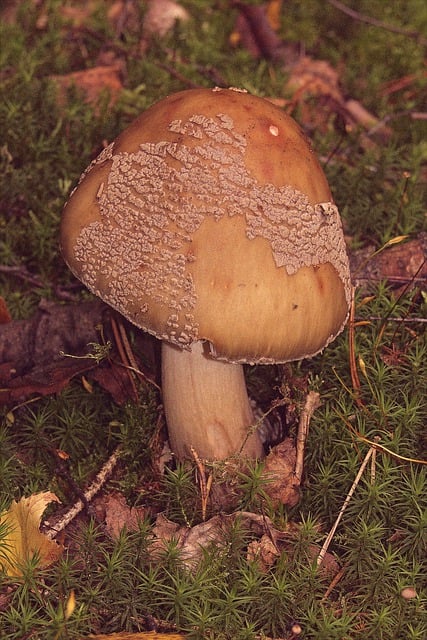
Growing Amanita Muscaria, commonly known as the fly agaric, for personal consumption requires careful consideration and adherence to safety protocols due to its psychoactive properties. The cultivation of this species should be approached with caution, as improper handling or dosage can lead to adverse effects. Amanita Muscaria, a mycorrhizal fungus, can be cultivated in a controlled environment to ensure the purity and potency of the fruit bodies. It is essential to understand the optimal growing conditions, which include a balance of temperature, humidity, and substrate type. The substrate, typically a compost made from horse manure and soil, should be well-prepared and sterilized to prevent contamination. Once the spores have germinated and mycelium has established itself, the conditions should be maintained until the characteristic red and white-spotted caps appear.
Harvesting Amanita Muscaria edible should only be done when the mushrooms are mature but before the spores have fully dispersed. The dosage of this psychedelic substance can vary greatly depending on factors such as the individual’s tolerance, the potency of the specific strain, and the body’s chemistry. It is crucial to start with a low dose to gauge individual sensitivity. Consumers should always consult with a healthcare provider before ingesting Amanita Muscaria, especially if they have pre-existing health conditions or are taking other medications. Additionally, the mushrooms should be prepared and stored properly to maintain their potency and avoid contamination. Proper dosage and safe consumption practices are key to ensuring a positive experience with Amanita Muscaria, and these must be prioritized over any desire to simply ‘grow your own’. Safety and legal considerations should always take precedence when considering the cultivation and use of this psychoactive mushroom.
Understanding Dosage: Factors Influencing the Effects of Amanita Muscaria Consumption
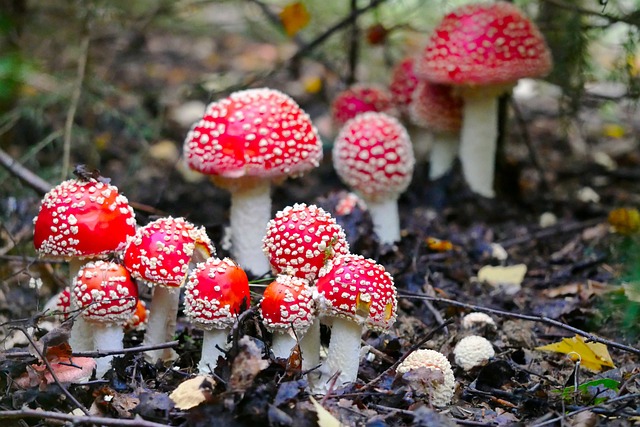
Understanding the effects of Amanita Muscaria consumption requires a careful examination of various influencing factors. Amanita Muscaria, commonly known as the fly agaric, is a species of psychoactive mushroom that has been a subject of fascination and use in different cultural contexts for centuries. The dosage of this mushroom significantly impacts its effects due to its active compounds, including muscimol and ibotenic acid, which are present in varying concentrations depending on factors such as the maturity of the mushroom and the part consumed.
The ingestion of Amanita Muscaria has been associated with both psychological and physical effects that can range from mild to intense, depending on the dosage. Factors such as individual physiology, including body weight and metabolism, play a crucial role in how the body processes these compounds. Additionally, the method of consumption—whether ingested raw, prepared in a dish, or consumed as a tea—can affect the absorption rate and intensity of effects. Environmental conditions under which the mushrooms grow can also influence their potency; for example, young caps typically contain more psilocybin than older ones. It is imperative to approach the consumption of Amanita Muscaria with caution and knowledge, as misjudgment of dosage can lead to unpredictable outcomes. Proper identification and dosage determination are essential for any individual considering the use of this mushroom in a ritual or medicinal context.
The Art of Preparation: Methods for Consuming Amanita Muscaria Edible
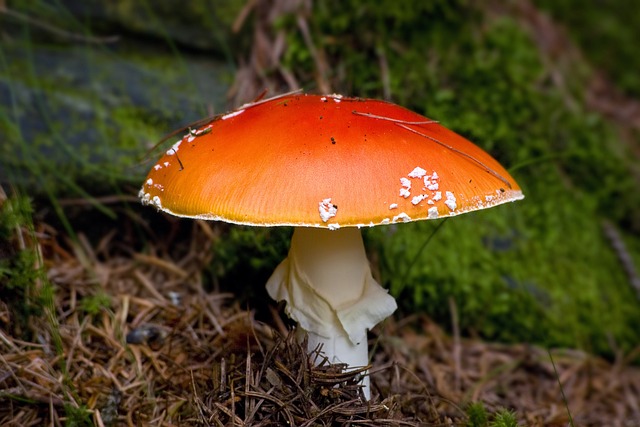
The Amanita Muscaria edible, commonly known as the fly agaric, is a fungal species with a storied history in various cultural contexts. Its psychoactive properties have long been recognized and utilized in folklore and some contemporary settings. Preparing this mushroom for consumption requires meticulous attention to detail and adherence to traditional or modern methods to ensure safety and efficacy. The process begins with the careful selection of mature, healthy Amanita Muscaria specimens, which are identified by their distinctive red and white cap, often with patterns resembling zones or scales. Harvesting should occur in a clean environment to avoid contamination. Once gathered, the mushrooms are cleaned thoroughly to remove any debris, soil, or potential hazards such as insects or other mycota.
Subsequent preparation methods vary but often include drying or cooking to break down the compounds within the mushroom. Drying is a common approach that concentrates the active ingredients and extends the mushrooms’ shelf life. This can be achieved through several methods, including air-drying or using a dehydrator. The dried Amanita Muscaria edible can then be ground into a fine powder, which can be encapsulated for ingestion or mixed with other consumables like tea. Alternatively, the mushrooms may be prepared as a fresh dish, such as in a stew or sauce, where they are cooked to soften the flesh and facilitate digestion while activating certain compounds. Whether consumed raw, dried, or in a culinary preparation, it is imperative to approach the ingestion of Amanita Muscaria with caution, respecting its potent effects and the need for moderation and responsible use.
Navigating Legalities and Safety Precautions When Using Amanita Muscaria
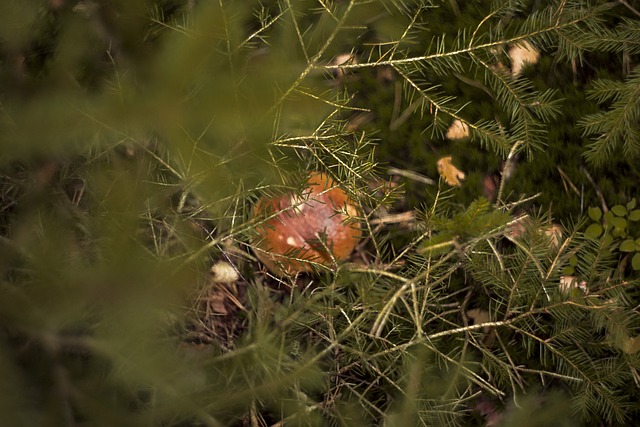
When exploring the potential of Amanita Muscaria for medicinal or psychoactive purposes, it is imperative to approach the subject with a keen awareness of both legal and safety considerations. The Amanita Muscaria, commonly known as the Fly Agaric, is a fungus that has been part of folklore and some traditional practices for centuries. While it is recognized as an edible mushroom in certain contexts due to its non-toxic properties at certain dosages when prepared correctly, its psychoactive compounds necessitate a cautious approach. The legal status of Amanita Muscaria varies by jurisdiction; in some regions, it is fully legal, while in others, it may be restricted or banned. It is crucial to verify the local laws and regulations governing the use of this mushroom before any consumption, as violations can lead to serious legal consequences.
Safety precautions are equally paramount when handling and consuming Amanita Muscaria. The correct identification of this species is vital, as many poisonous look-alikes can cause severe harm or even be fatal. Even among identified specimens, the dosage plays a critical role in determining the effects, which can range from mild to intense hallucinations to profound spiritual experiences. Consumption should be approached with respect for its potency and with full understanding of one’s physiological response. It is recommended to consume Amanita Muscaria under the guidance of an experienced individual or within a regulated setting, where safety can be prioritized and monitored. Additionally, individuals with pre-existing health conditions should consult healthcare professionals before considering any form of ingestion. Understanding the legal landscape and adhering to stringent safety measures are essential steps in responsibly engaging with Amanita Muscaria, whether for its edible properties or its psychoactive effects.
Personal Experience: Amanita Muscaria Dosage Tales from the Field
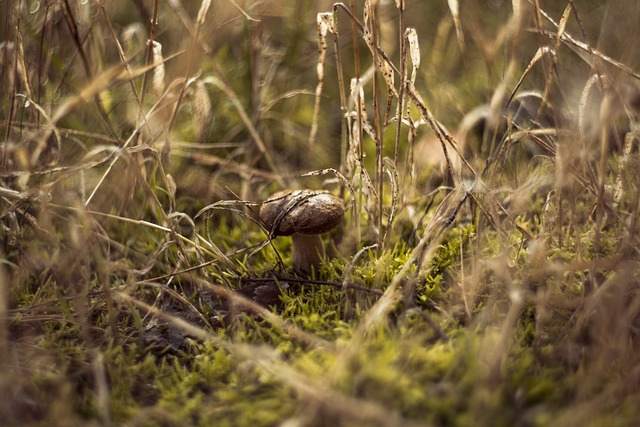
Throughout history, the Amanita Muscaria has been a subject of both fascination and caution within foraging and mycological communities. This distinctive mushroom, known for its bright red cap and white spots, has long been associated with folklore and legend. In contemporary times, enthusiasts have experimented with Amanita Muscaria edible consumption, often recounting their experiences to inform future foragers and researchers. Personal anecdotes from the field suggest that the dosage of this psychoactive mushroom plays a critical role in determining its effects. One individual reported consuming a single cap, which resulted in a mild euphoria and visual distortions, while another, who ingested several caps, experienced a more intense psychedelic journey. These tales highlight the variability in dosage sensitivity among individuals. The psychoactive compounds found within Amanita Muscaria, particularly ibotenic acid and muscimol, are believed to be responsible for its effects, which can range from subtle sensory enhancements to profound hallucinations. It is imperative for anyone considering the consumption of Amanita Muscaria to approach it with caution, as the mushroom’s potency can vary based on factors such as age, body chemistry, and environmental conditions under which it was grown. These personal experience narratives serve as a testament to the importance of understanding the nuances of dosage when engaging with this ancient and enigmatic fungal species. Prospective consumers should be aware that without careful consideration and accurate dosing, the experience can range from pleasurable to perilous, underscoring the need for responsible use and further scientific research.
Amanita Muscaria in Modern Times: Potential Therapeutic Uses and Future Research Directions
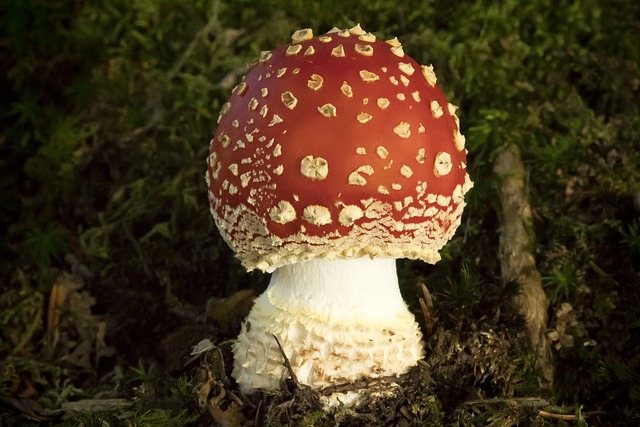
The Amanita Muscaria, commonly known as the fly agaric, has a storied history in both folklore and cultural contexts. In modern times, scientific interest in this mushroom extends beyond its traditional use as an entheogen or folk remedy. Recent research has begun to explore the potential therapeutic uses of Amanita Muscaria, with studies focusing on its psychoactive compounds, particularly ibotenic acid and muscimol. These substances have been found to exhibit various pharmacological properties, including antidepressant-like effects and neuroprotective actions. Preclinical studies suggest that Amanita Muscaria could hold promise for treating neurological disorders such as Alzheimer’s disease and depression. However, the therapeutic use of this mushroom remains largely experimental, and there is a significant need for further research to elucidate its mechanisms of action and establish safe and effective dosing guidelines. As we delve into the pharmacokinetics and potential benefits of Amanita Muscaria, it is crucial to approach such inquiries with caution, given the psychoactive nature of the mushroom and the need for rigorous clinical trials to assess its safety and efficacy. Future research directions should prioritize the development of standardized dosage forms, the identification of active components responsible for therapeutic effects, and the understanding of the long-term effects of Amanita Muscaria consumption on human health. Edible forms of Amanita Muscaria have been traditionally prepared in various ways to mitigate potential toxicity while enhancing the desired effects. As such, the intersection of traditional knowledge and modern scientific methods offers a promising avenue for exploring the full spectrum of this mushroom’s medicinal properties, with the ultimate goal of harnessing its potential therapeutic benefits responsibly.
